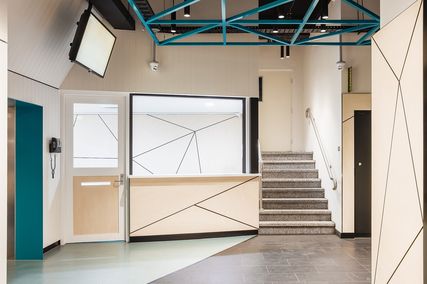What did the survey find?
Guest editors: The survey revealed a resounding concern about the influence and impact of low fees on wellbeing in the profession, with a strong perception that societal under-valuing of architectural design related to equally undervalued financial investment.
Many participants spoke of structural impediments to fair remuneration, namely a “race to the bottom” in fee-undercutting and poor procurement practices that cyclically led to unrealistic deadlines, long hours and overtime, and low pay.
Respondents noted an incommensurability between the high levels of professional risk that architectural practitioners are obliged to carry and the low levels of remuneration. There was also concern over a perceived discrepancy between contracted working hours and hours actually worked.
Significantly, hundreds of participants spoke of a normalization of unpaid overtime. This sentiment was echoed in the quantitative data collected, in which more than a third of respondents reported that they were asked to work extra hours on a monthly, weekly or daily basis, and 86 percent of respondents reported a mild or strong negative effect on their wellbeing as a result of the amount of work required of them.
A significant proportion of respondents spoke about the direct impact of fees and remuneration on their wellbeing. Some spoke of personal financial struggles, identified as the result of poor remuneration, which, in turn, is seen to be linked with low fees charged.
All quotations are from The Wellbeing of Architects 2021 Practitioner Survey (see thewellbeingofarchitects.org.au).
43 percent of respondents expressed dissatisfaction with their current level of remuneration
“Australian society places a low value on good design, so the fees we can command are never enough to cover the work needed to produce excellent design. As a result, design excellence only happens off the back of architects’ unpaid overtime.”
– Female, associate, 36–45 years
“Fee-cutting is the cause of a lot of issues. Not only does society value architecture less, but workers are expected to produce the same amount of work to the same standard for a lower price. The profession should consider standardizing fees to the extent that there is room for competition but remuneration is reasonable.”
– Female, graduate, 26–35 years
“If I am paid to work 40 hours, why is it written in my contract to ‘expect reasonable overtime 47.5 hours’?”
– Female, graduate, 26–35 years
What can we do?
Angelina Pillai, (CEO of the Association of Consulting Architects): Fees, remuneration and their interconnectedness with the value of architecture have been significant issues in the profession for decades. At the Association of Consulting Architects (ACA), we have been aware of this through anecdotal evidence and observations, member feedback and intermittent pulse-check surveys. The evidence from The Wellbeing of Architects survey provides data that cannot be ignored, validating how serious these issues are in terms of wellbeing and the human cost of poor practices.
The ACA is promoting a shift in how we approach fee calculation and the running of a practice, to focus on business- oriented, sustainable and equitable models as enablers to improved cultural outcomes. But there are a number of challenges associated with this shift.
The first is not about what to charge, but how to charge, and as ACA national secretary Paul Viney advises, fee scales are not generally the solution.1 Using the ACA’s time/cost calculator guide,2 a practice can accurately work out the cost of all business activities through a detailed breakdown. The calculator is also a benchmarking tool, enabling a comparison of office overheads between similar-sized practices. ACA surveys indicate that more than 30 percent of firms do not have a resource management system;3 this can contribute to a culture of long hours and unpaid overtime, which leads to underpaid staff and, in the worst cases, interns being used for illegal commercial gain.
The second challenge relates to employment conditions and pay. The ACA encourages practices and employees to know their award.4 The 2020 ACA salary survey showed that 14 percent of practices are responsible for wage theft because they are paying beneath the award.5 While some practices are inadvertently doing this, it remains unacceptable. We strongly urge architectural practices to familiarize themselves with the relevant awards and to use them as minimums, not as maximums.
The third challenge is to shift the pendulum on the profession’s culture – especially, as one survey respondent noted, since design “is becoming more valuable in the community, but the reflection in architectural salaries is poor.” Don’t undervalue your own architectural worth. When you see a doctor, lawyer or accountant, you seldom barter with them on their fees. Don’t let others do the same with you. If architecture practices are committed to equitable conditions for all, then that should extend to what is expected of clients.
The fourth challenge is increased advocacy. The ACA, together with other industry bodies, needs to have a strong, firm voice to ensure that the value of architects and architecture is recognized, respected, and properly remunerated and resourced. We also need governments to be model “clients” who advocate for improved procurement processes and contract conditions, rather than being part of the problem.
Further, we need more research and benchmarking. As ACA national president John Held observes, “We don’t value design because we don’t price the cost of poorly designed buildings or cities. We don’t value good documentation because we don’t directly see the risks and costs associated with shoddy documents. We don’t value fair contracts because we don’t realize the cost of the risks involved. We don’t value independent contract administration because often the client isn’t even aware of the future costs of poor construction or substitutions of materials.” As he suggests, “A national approach to practice research … could lay the foundation of persuasive arguments for the value of our work.”6
Finally, the ACA has established an Architects Mental Wellbeing Forum7 to provide a space for conversations, ideas, resources and collaboration to collectively champion wellbeing initiatives across the profession and offer support. Being part of The Wellbeing of Architects project is part of our commitment.
For the ACA, the evidence that this survey has provided is poignant, and a clear signal that we need to strengthen our mission. More broadly, we all have a responsibility to step up and make a difference, using our shared agency and working as a collective.
The ACA is an industry partner of the Wellbeing of Architects project.
1. Madeleine Swain, “Calculating fees – part one: Working out your break-even point,” Architectural Review, republished with permission by ACA, 9 March 2022: aca.org.au/fee-calculation-part-one.
2. See aca.org.au/architects-time-cost-calculator.
3. Management for Design in partnership with the ACA, “Business and practice management systems survey results,” December 2020, m4d.com.au/wp-content/uploads/M4D_Business-Systems-Survey_Dec2020.pdf.
4. For a short overview of the Architects Award, the ACA’s role in negotiating it and the assistance it can provide members, see aca.org.au/the-architects-award.
5. For reports on previous survey findings, see aca.org.au/national-salary-survey.
6. John Held, “Fee redemption: A mutually assured future,” Association of Consulting Architects Australia, 19 June 2018, aca.org.au/fee-redemption-a-mutually-assured-future.
7. See aca.org.au/community/amwf.
















